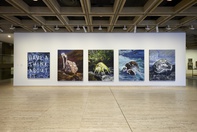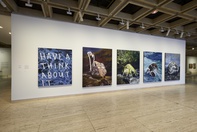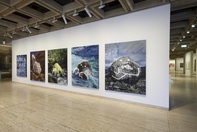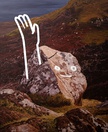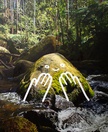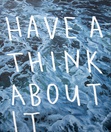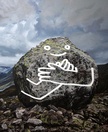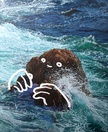Abdul Abdullah
Gadigal Country, Sydney
2023
Displayed 2023 at Art Gallery of New South Wales
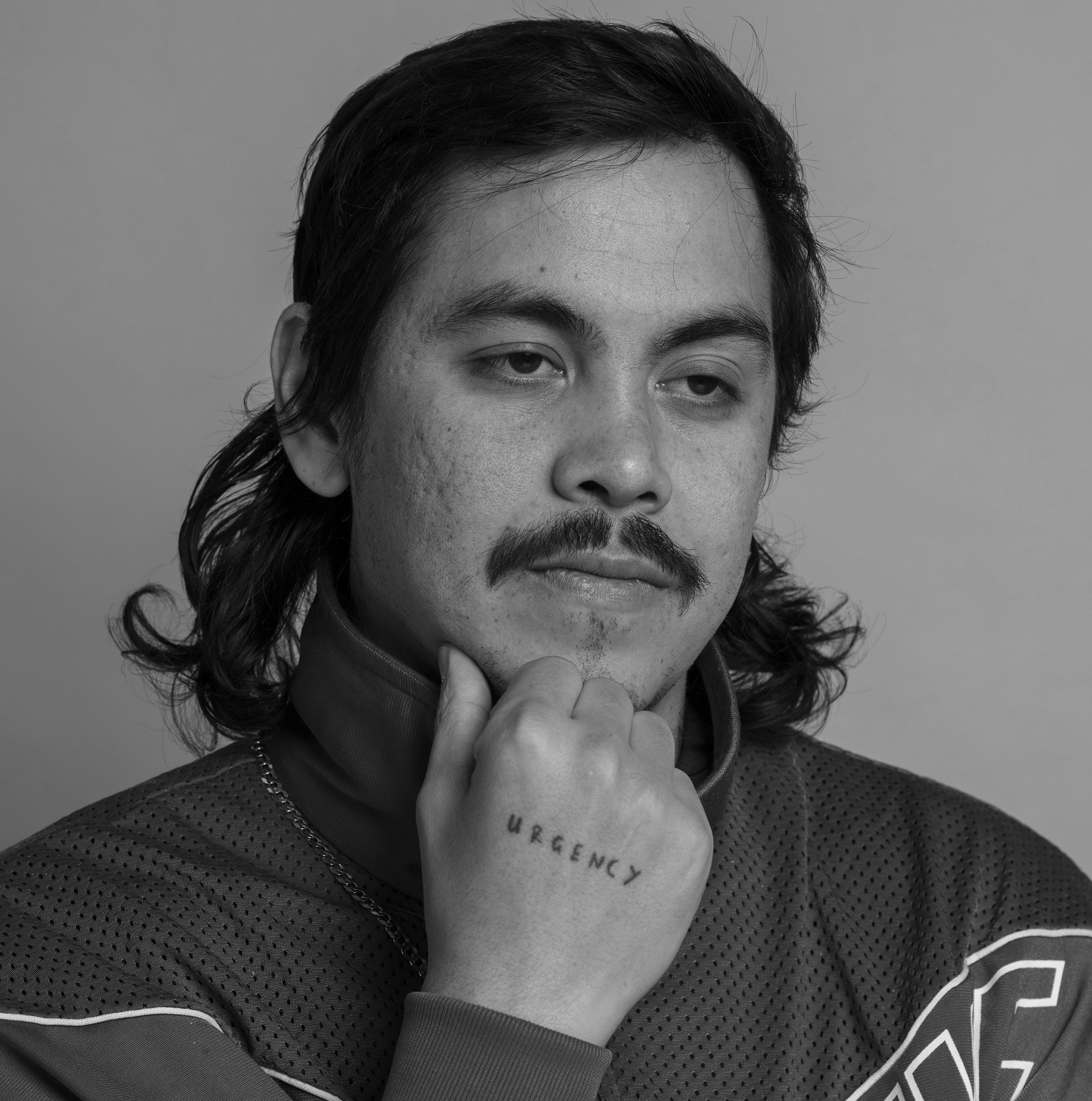
Abdul Abdullah
Born 1986 Whadjuk Nyoongar Country, Boorloo/Perth.
Lives and works Gadigal Country, Sydney.
Abdul Abdullah is an Australian multi-disciplinary artist. As a self-described ‘outsider amongst outsiders’ with a post-9/11 mindset, his practice is primarily concerned with the experience of the ‘other’ and the disjuncture between perception/projection of identity and the reality of lived experience. Identifying as a Muslim and having both Malay/Indonesian and convict/settler Australian heritage, Abdullah occupies a precarious space in the political discourse that puts him at odds with popular definitions. He sees himself as an artist working in the peripheries of a peripheral city, in a peripheral country, orbiting a world on the brink.
Photograph: Isabella Melody Moore
Artist text
by Nick Yelverton
Nature is personified in Abdul Abdullah’s layered landscape and seascape paintings. The natural scenery portrayed in these works is appropriated from stock images intended for use in social media, advertising, and website design, with Abdullah favouring ones with large rocks in the foreground so that he can anthropomorphise them with emoji faces and hand gestures. These humanised rocks are typically accompanied by a vista overlaid with handwritten text, which expresses a sentiment that neither affirms nor disavows the visual rhetoric of the scenery underneath. For example, in one work Abdullah has scrawled ‘I AM PROBABLY FINE’ on an ominous depiction of choppy water, suggesting that the message he is communicating might be at odds with what he is truly thinking and feeling. The incongruous elements within these pictures represent contradictions between one’s true self, the persona they present to society, and others’ perceptions of them. They are informed by the Islamophobia and stereotyping that Abdullah was subjected to as a Muslim man growing up in Australia following the 9/11 terrorist attacks in 2001. Indeed, Abdullah wryly describes these works as ‘almost positive self-affirmations,’ indicating there is an autobiographical dimension to their off-kilter remarks and countenances.
Abdullah’s renderings of stormy ocean views and craggy coastlines also address the demonisation of asylum seekers in Australian politics and media. Partly inspired by an image of breaking waves used in the design of the Australian Government’s controversial ‘NO WAY’ poster, which was rolled out in 2014 as part of its military-backed Operation Sovereign Borders campaign, they speak to the geographic and political obstacles faced by asylum seekers who are forcibly deterred from entering Australia illegally by boat. They gesture to the so-called ‘island mentality’ which characterises the insular worldview of some Australians who hold xenophobic, sometimes blatantly racist, attitudes towards immigration, multiculturalism, and border control. With global sea levels rising, and regional areas in Australia recently devastated by heavy rainfall and catastrophic flooding, it is also tempting to read these works as prophetic signs of global warming and climate change.
The maritime migration paths of Abdullah’s paternal and maternal ancestors underpin his water-themed paintings. His Malay mother is descended from the Buginese of South Sulawesi, Indonesia, a seafaring culture with trading links to the Yolŋu of Arnhem Land dating back to at least the 18th century, while his father’s fourth great-grandfather was one of the convicts who arrived in Australia on board the British ship Indefatigable in 1815. Abdullah, whose unapologetically confrontational works have provoked ad hominem criticism of his faith and ethnicity in the past, ironically has cultural ties to this country which are just as old, if not older, than those who attack him. In this respect, Abdullah’s arresting landscape and seascape works continue his practice of exposing home truths, challenging stereotypes and misconceptions, and confronting xenophobia and racial prejudices.
Auslan - Abdul Abdullah
2min
About the work of Abdul Abdullah in The National 4.
Artist's acknowledgements
The artist thanks studio assistants Lisa Twomey, Alessia Zanetti, and Aimee Fitzgerald. Abdul Abdullah is represented by Yavuz Gallery, Sydney and Singapore.
